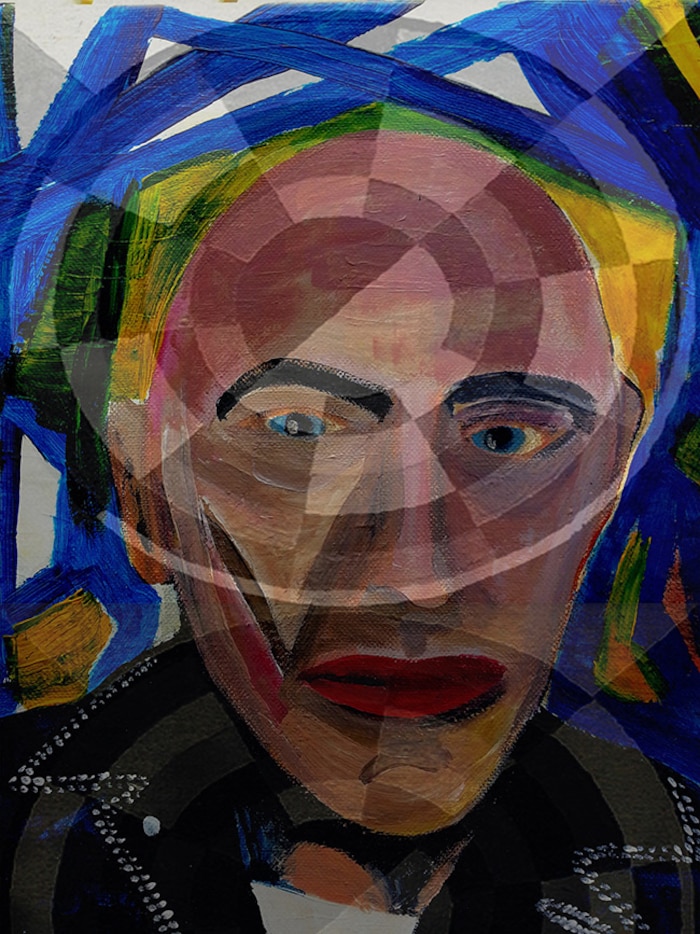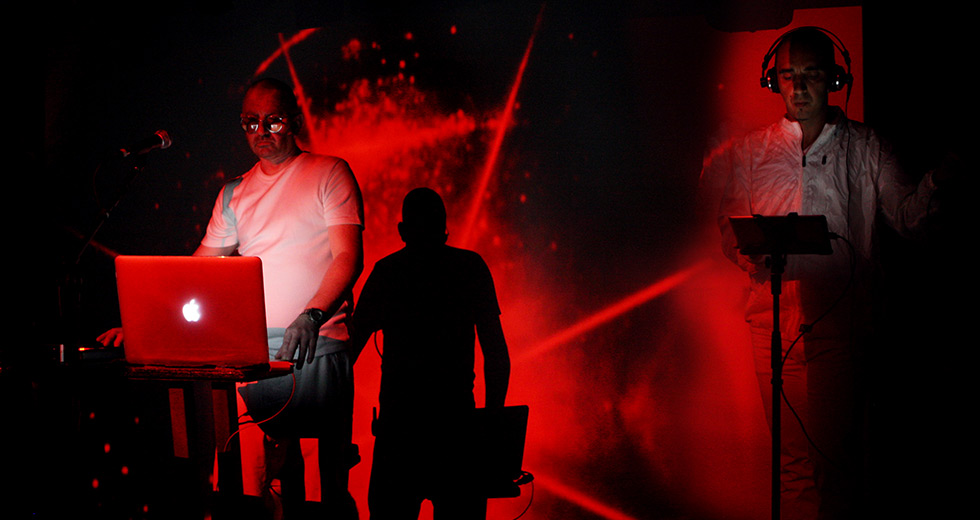Interview: Clock DVA’s Adi Newton on Wild Early Performances and the Future of Music
Clock DVA’s Adi Newton has always been interested in the future. Whether it’s been as part of the group of the same name in Sheffield in the ’70s – a crew that featured Martyn Ware and Ian Marsh, who later went on to become part of Human League – or in his own work with Clock DVA. The long-running group has had many forms through the years. The latest sees Newton putting out a USB smart card as a release, which houses new music, remixes, videos, and more. We caught up with Newton to discuss the past and the future earlier this month.
I wanted to start with painting, because in reading over the interviews you sent me it seems like you always are quick to mention that you started out as a painter.
Yes, that’s because that’s what I am, rather than a musician, I’m an visual artist working within sound. I began painting at a very young age, and I practiced painting as a discipline before I ever became involved in music. I was always interested and engaged in art. My earliest influences come from Expressionism, Van Gogh, Munch, Cezanne. Then Abstract Expressionism. Pollock, DeBuffet, Ossario. Through these I discovered Duchamp, Man Ray, Francis Bacon, and so it goes.
At what point did you get attracted to music?
From art to music? I came to it by chance really. I was at college and there was a friend who had invited me to a theater arts project. Through that we developed stagings. Part of this was using sound or music as part of the performance. It was through that that I became friends with Ian Marsh and Martyn Ware, which led to the formation of The Future. It was through my interest in theatre that influenced my outlook on performance.

Can you talk a little bit about the actual technical aspect of what you were doing with tape recorders, loops, and delays back then?
My contribution to The Future was really based on editing tapes, recordings, and sounds and applying them through a series of processing units. They were mostly things that were available like multi-effects units but I would manipulate and treat the original recordings as a basis to further treatment. I got into this through art – acousticmatic, concrète music, GRL people like Pierre Schaeffer, John Cage, Luciano Berio, Earle Brown and Wendy Carlos. I loved that avant-garde use of sound, its unconventional use in composition. That’s how I began. It was more accidental than something conceived and aimed for.
You bought your first synthesizer in 1978. Can you tell me about what it was and why that was the one that you bought?
The Future were doing so much work with electronics, and I felt that it was restricting in some senses. I wanted to use more electro-acoustic sounds or instruments . We had a sort of parting of company and ideas in that respect. I had very strong ideas about what I wanted to do with music. Martyn had strong ideas of what he wanted to do, which was more towards an accessible / pop music. We went our own ways , after which I bought the synthesizer, the EMS Synthi E, a modular system built in a suitcase similar to the design used for the EMS Synthi A. It was based on patching independent modules with wires, and was primarily to apply electroacoustics, as any device could be inputted in stereo directly into the Synthi E. I wanted the possibility to use any sound.
It seems like Sheffield around that time was quite a hotbed of creativity. Do you think that your career would look the same as it does now if you’d been in London or somewhere else?
I think it would definitely be different for sure. I was living in London for quite a few years, and then I moved back to Sheffield and that’s when all the New Wave happened.
You said in an interview that talking to John Foxx in London before you left to go back to Sheffield was an inspiration.
All the mannequins hanging up, in rows and rows... a kind of J. G. Ballard setting.
Yeah. I used to work in a mannequin renovation studio where we used to prepare shop window models / showroom dummies. We repaired them with spare parts and we’d give them a paint job. There was a studio near the loft where I worked which Ultravox where using to rehearse. I don’t think they were known as Ultravox then. John and I used to meet and chat.
A mannequin repair shop!
Yeah, it was a very strange place. It had all the mannequins hanging up, in rows and rows of them, which is where we would refurbish them, a kind of J. G. Ballard setting.
Some members of The Black Dog said that you had some crazy performances back then. What were you doing back then?
They must be referring to the earliest DVA performances back in late 1978 and early 1979 We’d used strobes directly focused on the audience. Slides and 8mm projections. And, on a few occasions early on in the DVA development, we smashed a few things. I remember one time at a club called The Penthouse we had two banks of three fluorescent tubings on the stage, and I had a separate one, an individual one which I eventually smashed during the performance, because that’s what they were: performances / stagings. It’s a form of theatre, a projection of image. We were very nihilistic in some sense. I guess it was appropriate, given that age and the eruption of punk with its anarchic ideals We were sort of an electronic Stooges, if you want to put it in those terms. We used a form of aggressive or anarchistic angst, and the audience was a passive object. We wanted to stir things up, kickstart the mind.
What are some of the ideas that interest you now? I imagine it has changed quite a bit over the years.
Oh yeah, definitely. I think I am always developing my interests, I always felt the format of a group / singer was limited in a lot of senses. Although, that format works for a lot of people. I always wanted to go a little bit beyond that and do something else. I’ve always used visual things, films and so on from the very beginning because I’m a visual artist, so it’s a natural extension. It’s just developing that really over time, refining it to some degree, and expanding it in different ways to reflect the concepts, imagery, to reflect the sound / ideas and emphasize the conceptual.
Do you find that there’s a throughline from the earlier work? Is there an idea that connects all of it?
I think to some degree, recently I’ve gone back to some of the ideas that were an influence on myself and the very early DVA material, particularly Malevich and Suprematism. I think it was such a radical change in the way painting and art was conceived that it change everything. Malevich’s Black Square was saying nothing, but it was saying everything at the same time. He was questioning the whole thing. If you read his writing especially the Suprematist Mirror, it’s very relevant to the post-modernist Age. Sometimes it’s a single individual’s radical idea that alters the structure of progress.
This is what the new DVA release CLOCK 2 is about among other things. I know we have mostly spoken of the past, but Clock DVA is very much concerned with now and creating new forms and developing new ways and ideas to try to expand the arena. All art has a connection to the past or has been influenced by it. I think it’s important that we still try and push the envelope further rather than remain within the safety of what we have already achieved. CLOCK 2 is aimed at that.
